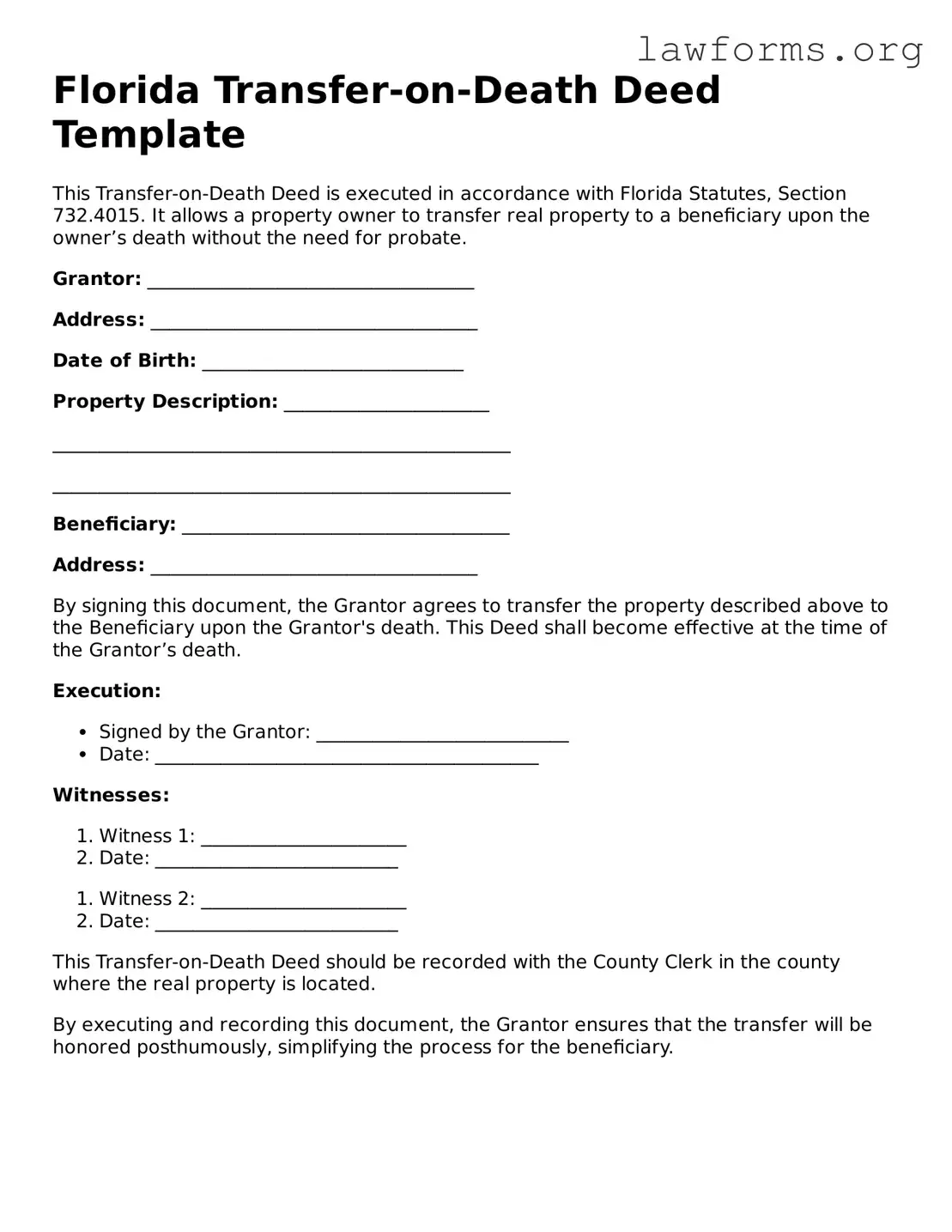Florida Transfer-on-Death Deed Template
This Transfer-on-Death Deed is executed in accordance with Florida Statutes, Section 732.4015. It allows a property owner to transfer real property to a beneficiary upon the owner’s death without the need for probate.
Grantor: ___________________________________
Address: ___________________________________
Date of Birth: ____________________________
Property Description: ______________________
_________________________________________________
_________________________________________________
Beneficiary: ___________________________________
Address: ___________________________________
By signing this document, the Grantor agrees to transfer the property described above to the Beneficiary upon the Grantor's death. This Deed shall become effective at the time of the Grantor’s death.
Execution:
- Signed by the Grantor: ___________________________
- Date: _________________________________________
Witnesses:
- Witness 1: ______________________
- Date: __________________________
- Witness 2: ______________________
- Date: __________________________
This Transfer-on-Death Deed should be recorded with the County Clerk in the county where the real property is located.
By executing and recording this document, the Grantor ensures that the transfer will be honored posthumously, simplifying the process for the beneficiary.
